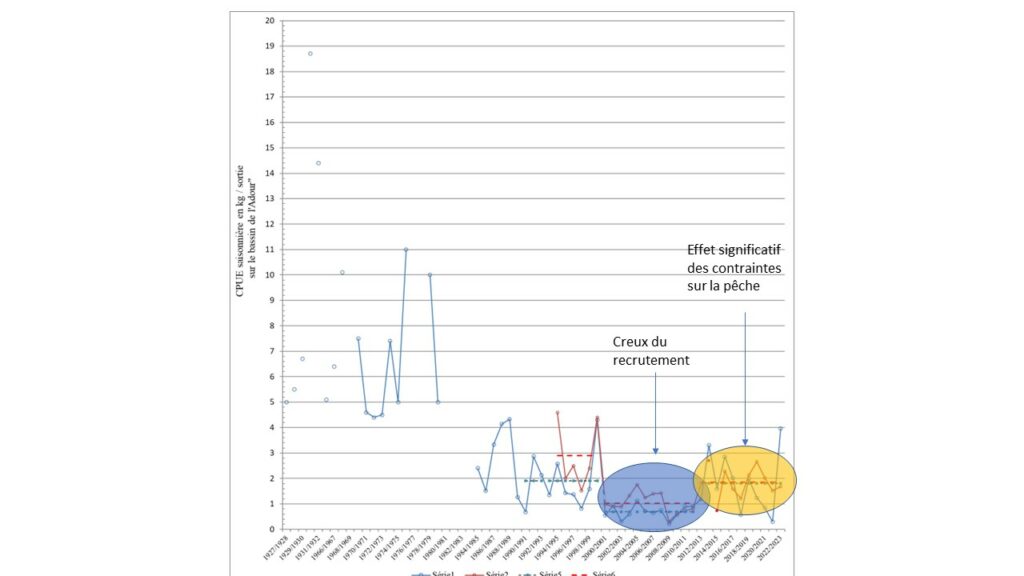
The figure above shows the trend in catches per trip recorded in the Adour estuary. This long series shows that the increase in glass eel recruitment observed from the 2012/2013 fishing season is significant. It comes after a drop in recruitment observed from the 2000/2001 fishing season. The average level of catches per trip by hand sieve (blue dotted line) is similar to that observed during the fishing seasons of the 1990s. The average level of catches per trip with the push sieve (red dotted line) remains lower than that observed during the 1990s, but much higher than that estimated during the low recruitment period. The most plausible explanation for this increase of the glass-eel recruitment is an effect of the restrictions imposed on the fishing of sub-adult eels (yellow and silver) in France and more widely in Europe under the Eel Management Plans.
These data are robust and it is a pity that they are not used by the ICES and GFCM expert groups on which the EU has relied to restrict fishing under pressure from certain environmental groups without having taken the trouble to check the results obtained under the Eel Management Plans.
It is also important to understand, as professional fishermen have repeatedly said, that without an improvement in the quality of estuarine environment and ecological continuity between the various functional habitats of that species, this increase in recruitment linked to the sacrifices of professional fishermen will not yield all the expected benefits. It is more that time that european and national managers understood this, because this sectoral policy that uses fishing as an adjustment variable can only lead to the disappearance of a responsible small-scale fishing activity that is important for the economy of the territories and, in the long term, to a sustainable impoverishment of a biological resource that cannot prosper without serious consideration of the restoration of its habitats that have been plundered by uses other than fishing.
The upward trend in this abundance indicator observed in the Adour basin is supported by numerous observations made independently on counting structures existing in other catchment areas: glas-eel or eel counts.